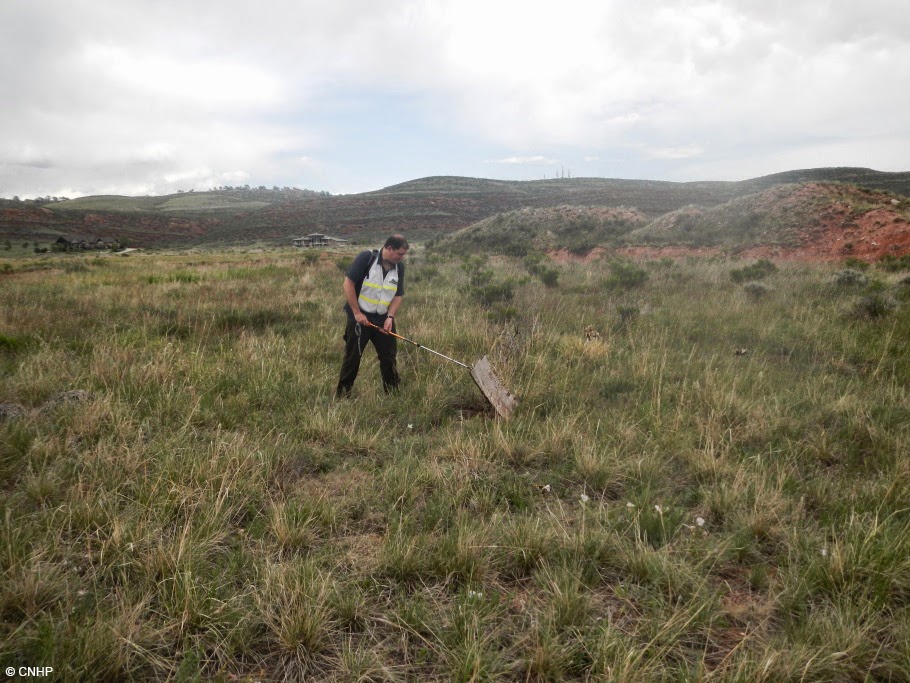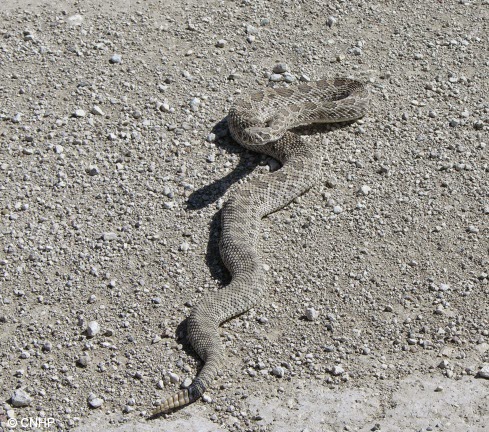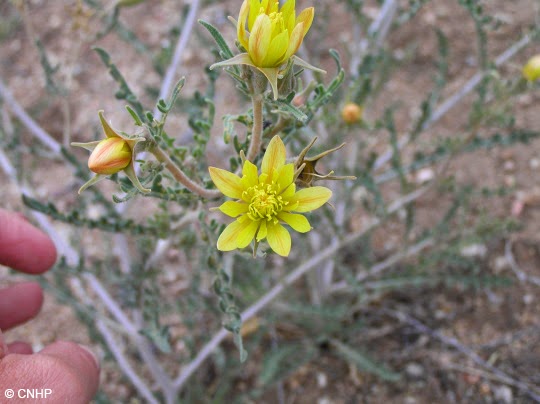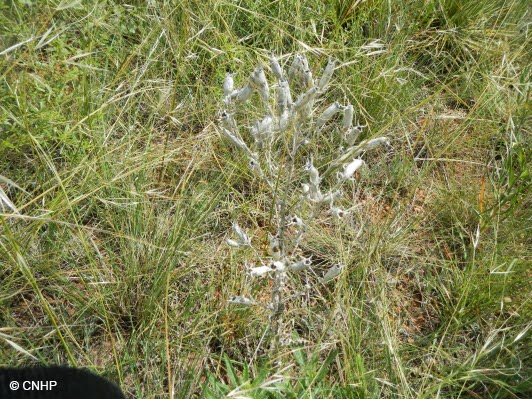Brad Lambert, CNHP zoologist, spent last spring at Devil’s Backbone Open Space lifting up rocks using a hiking pole. He was looking for prairie rattlesnakes, hoping to find them emerging from their dens. These dens, also called hibernacula, can contain hundreds of prairie rattlesnakes. Lambert’s surveys were part of an effort to find and protect rare animals and plants in one of Larimer County’s most popular hiking, mountain biking, and trail running destinations. Prairie rattlesnakes are not considered rare in the foothills of Colorado, but staff members from Larimer County’s Open Space Program aim to use Lambert’s findings to keep trails away from hibernacula. Lambert, with help from CNHP botanist Pam Smith, documented 32 potential hibernacula in rocky outcrops, prairie dog towns, and piles of concrete debris.
 |
| Brad Lambert, CNHP zoologist, searches for prairie rattlesnakes at Devil’s Backbone Open Space, Larimer County, Colorado |
 |
| A prairie rattlesnake hesitates before coiling |
Lambert and Smith also documented a new population of jeweled blazing star (Mentzelia speciosa var. speciosa) along a rocky, hogback ridge. Jeweled blazingstar has bright yellow petals and seed capsules that are covered in Velcro-like hairs. The capsules readily cling to animal fur and clothing, allowing the seeds to be dispersed far from the plant’s location. At Devil’s Backbone, the blazingstar was found growing in a native shrubland of mountain mahogany (Cercocarpus montanus) with an understory of New Mexico feathergrass (Hesperostipa neomexicana). This rare plant community is threatened by urban expansion along Colorado’s Front Range.
 |
| The bright yellow petals of jeweled blazing star in early summer |
 |
| Jeweled blazing star’s dried seed capsules waiting to hitchhike on an unwitting animal or human |
Larimer County Open Space staff members have used Lambert and Smith’s discoveries to plan trails that route recreationists away from potential rattlesnake dens. This strategy will help minimize encounters between recreationists and rattlesnakes, while protecting rare plant communities and rare plants. We extend our thanks to Larimer County for making this project so close to home a big success!




